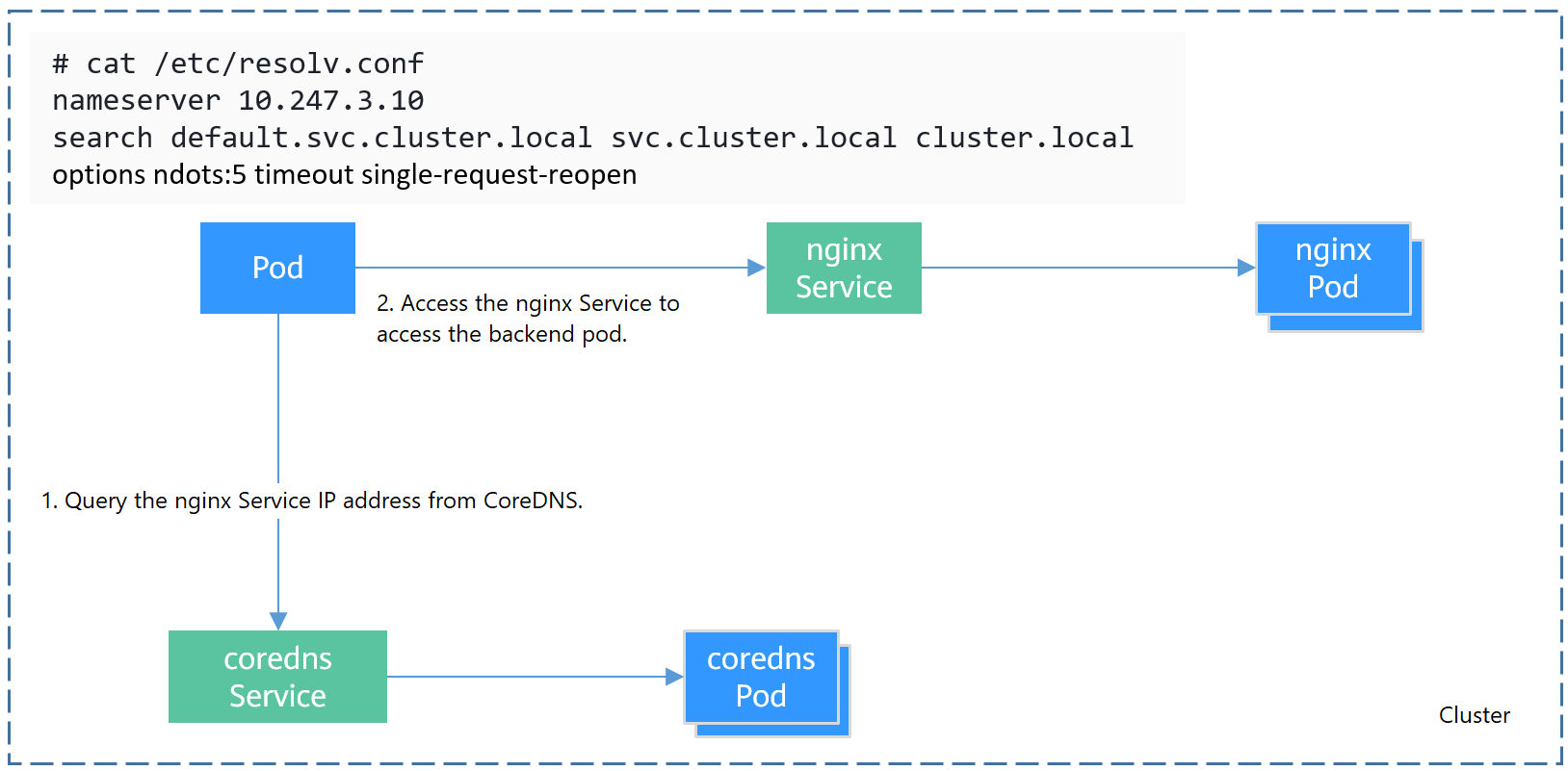Overview¶
Introduction to CoreDNS¶
When you create a cluster, the coredns add-on is installed to resolve domain names in the cluster.
You can view the pod of the coredns add-on in the kube-system namespace.
$ kubectl get po --namespace=kube-system
NAME READY STATUS RESTARTS AGE
coredns-7689f8bdf-295rk 1/1 Running 0 9m11s
coredns-7689f8bdf-h7n68 1/1 Running 0 11m
After coredns is installed, it becomes a DNS. After the Service is created, coredns records the Service name and IP address. In this way, the pod can obtain the Service IP address by querying the Service name from coredns.
nginx.<namespace>.svc.cluster.local is used to access the Service. nginx is the Service name, <namespace> is the namespace, and svc.cluster.local is the domain name suffix. In actual use, you can omit <namespace>.svc.cluster.local in the same namespace and use the ServiceName.
An advantage of using ServiceName is that you can write ServiceName into the program when developing the application. In this way, you do not need to know the IP address of a specific Service.
After the coredns add-on is installed, there is also a Service in the kube-system namespace, as shown below.
$ kubectl get svc -n kube-system
NAME TYPE CLUSTER-IP EXTERNAL-IP PORT(S) AGE
coredns ClusterIP 10.247.3.10 <none> 53/UDP,53/TCP,8080/TCP 13d
By default, after other pods are created, the address of the coredns Service is written as the address of the domain name resolution server in the /etc/resolv.conf file of the pod. Create a pod and view the /etc/resolv.conf file as follows:
$ kubectl exec test01-6cbbf97b78-krj6h -it -- /bin/sh
/ # cat /etc/resolv.conf
nameserver 10.247.3.10
search default.svc.cluster.local svc.cluster.local cluster.local
options ndots:5 timeout single-request-reopen
When a user accesses the Service name:Port of the Nginx pod, the IP address of the Nginx Service is resolved from CoreDNS, and then the IP address of the Nginx Service is accessed. In this way, the user can access the backend Nginx pod.

Figure 1 Example of domain name resolution in a cluster¶